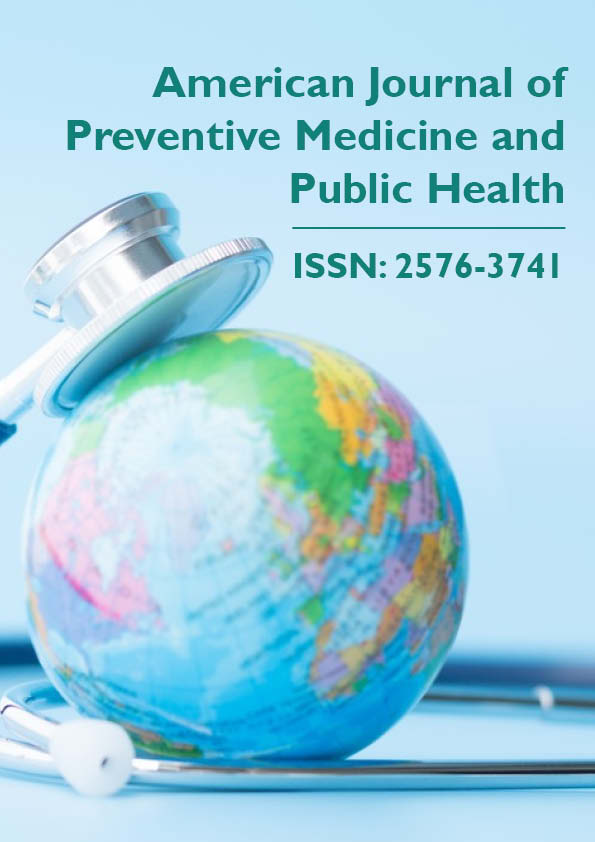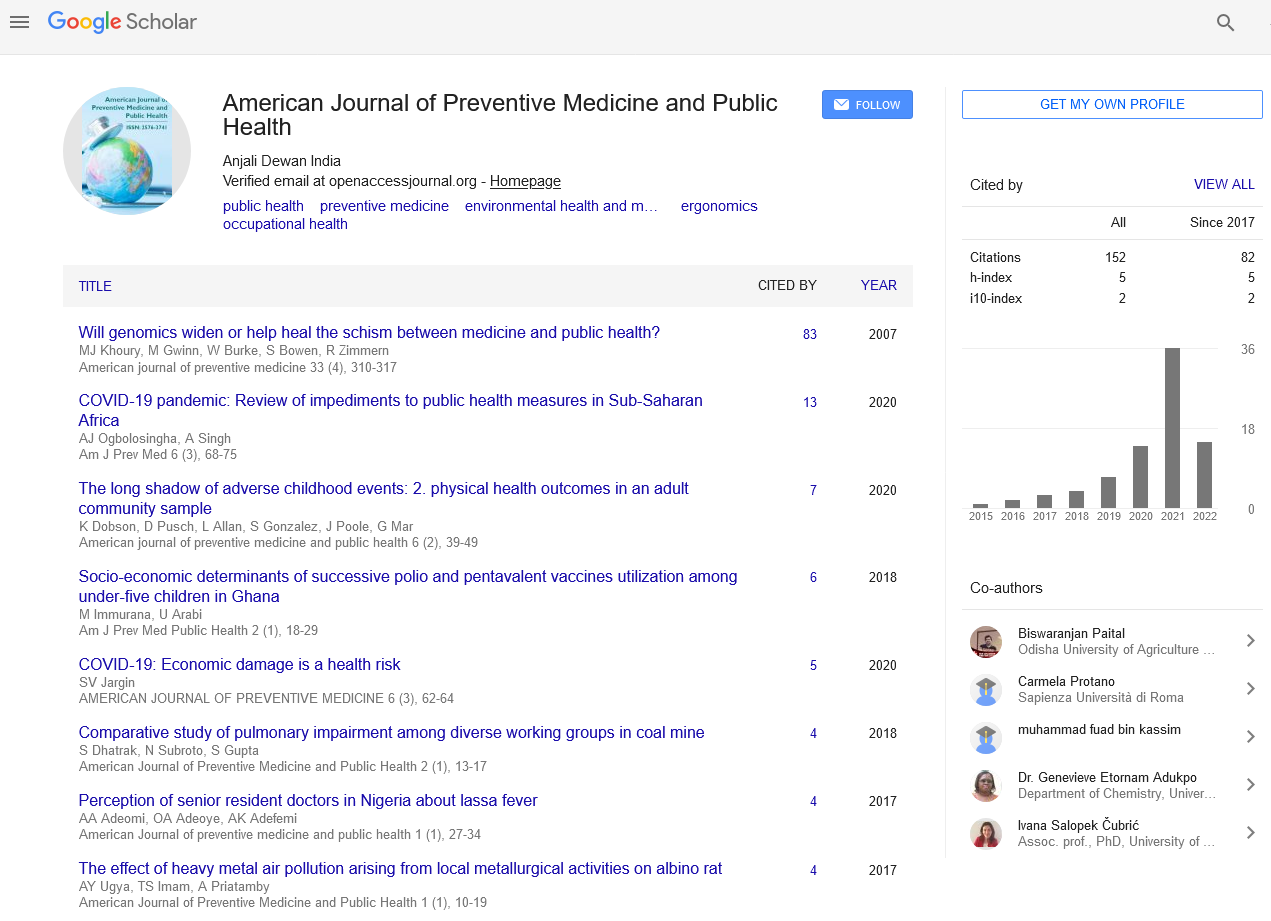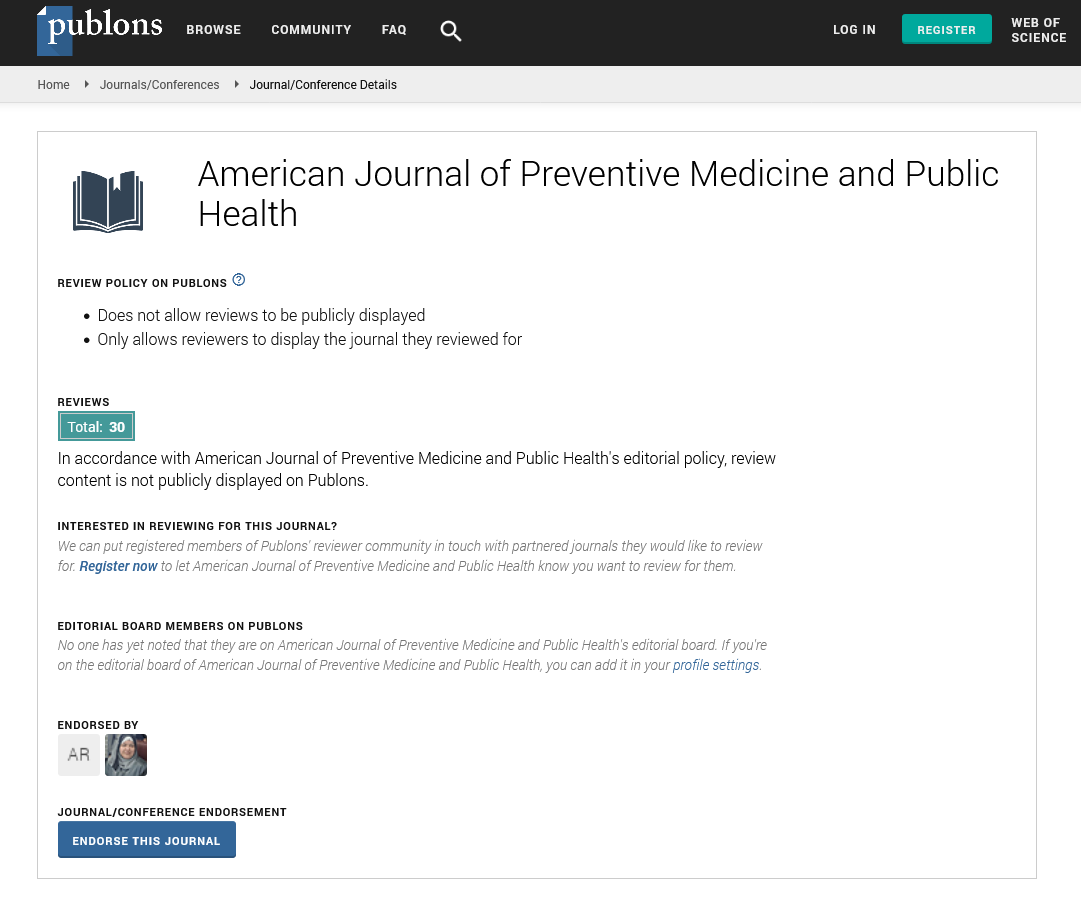Perspective - American Journal of Preventive Medicine and Public Health (2022)
Note on Diagnosis and Prevention of Dengue
Donald Shepard*Donald Shepard, Medicine Staff Office, US Food and Drug Administration, Rockville, Maryland, USA, Email: sheparddonald@yahoo.com
Received: 06-Apr-2022, Manuscript No. AJPMPH-22-64134; Editor assigned: 08-Apr-2022, Pre QC No. AJPMPH-22-64134 (PQ); Reviewed: 25-Apr-2022, QC No. AJPMPH-22-64134; Revised: 02-May-2022, Manuscript No. AJPMPH-22-64134 (R); Published: 09-May-2022
Description
Dengue fever is a mosquito-borne tropical disease transmitted virus. Three to fourteen days after infection, symptoms usually appear. A high temperature, headache, vomiting, muscular and joint problems, and a characteristic skin itch and rash are all possible symptoms.
Dengue fever vaccine has been licenced and is available commercially in a number of countries. As of 2018, the vaccine is only recommended for persons who have already been exposed to the virus or for groups with a high rate of prior infection by the age of nine. Other preventative techniques include limiting bite exposure and reducing mosquito habitat. By eliminating or covering standing water and wearing clothing that covers a substantial amount of the body, this can be accomplished. Supportive treatment for mild or severe acute dengue fever includes giving drinks by mouth or intravenously. Blood transfusions may be required in more serious situations. Due to an increased risk of bleeding from NSAID use, paracetamol (acetaminophen) is recommended instead of Nonsteroidal Anti-Inflammatory Medicines (NSAIDs) for fever control and pain relief in dengue.
Diagnosis
Dengue fever is typically diagnosed clinically, depending on symptoms described and physical examination; this is especially true in endemic areas. Early disease, on the other hand, might be difficult to distinguish from other viral infections. Fever with two of the following symptoms: nausea and vomiting, rash, widespread aches, low white blood cell count, positive tourniquet test, or any warning indication in someone who lives in an endemic area leads to a probable diagnosis. Before the development of severe dengue, there are usually warning signals. Anyone who develops a fever within two weeks of visiting the tropics or subtropics should seek medical attention. Dengue fever and chikungunya, a related viral virus with many of the same symptoms and occurrences in similar places of the world, can be difficult to separate. Investigations are frequently carried out to rule out other illnesses that produce similar symptoms, such as malaria, leptospirosis, and viral hemorrhagic fever.
A low white blood cell count is the first change detected in laboratory studies, followed by low platelets and metabolic acidosis. Low platelets and white blood cells are frequently associated with a somewhat high level of Aminotransferase (AST and ALT) from the liver. Plasma leakage causes hemoconcentration (as measured by an increasing hematocrit) and hypoalbuminemia in severe illness. Physical examination can reveal massive pleural effusions or ascites, but the presence of fluid on ultrasound may aid in the early detection of dengue shock syndrome.
Prevention
The mosquito that spreads the disease must be controlled and protected from bites. A five-part Integrated Vector Control programme is recommended by the World Health Organization: to ensure that public health bodies and communities are reinforced, advocacy, social mobilisation, and legislation are used; collaboration between health and other industries (public and private); an integrated disease-control strategy that makes the most of available resources; evidence-based decision-making to ensure that any interventions are correctly targeted; and capacity-building to guarantee that a sufficient response to the local situation is provided.
The most effective way to eliminate Aedes aegypti is to eradicate its habitats. This is accomplished by eliminating open water sources or, if that is not practicable, by treating these areas with pesticides or biological control agents. While pesticides containing organophosphates or pyrethroids are sometimes used, they are not regarded to be effective. Given concerns about harmful health effects from pesticides and more logistical issues with control agents, reducing open water collections by environmental alteration is the recommended approach of management.
Copyright: © 2022 The Authors. This is an open access article under the terms of the Creative Commons Attribution NonCommercial ShareAlike 4.0 (https://creativecommons.org/licenses/by-nc-sa/4.0/). This is an open access article distributed under the terms of the Creative Commons Attribution License, which permits unrestricted use, distribution, and reproduction in any medium, provided the original work is properly cited.







